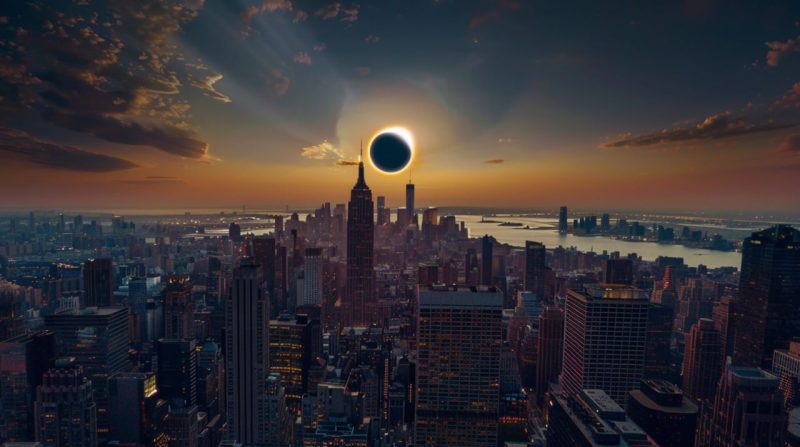
Monday is set to offer a celestial spectacle unlike any other—the total solar eclipse, an astronomical event that has stirred human imagination and scientific curiosity for millennia.
As the moon passes directly between the Earth and the sun, it will cast a shadow over North America, turning day into an eerie twilight for a brief, magical moment. This isn’t just any ordinary Monday; it’s a day where, for a couple of minutes, the usual hustle and bustle might just come to a standstill as people look upwards, donning their eclipse glasses, to witness this rare natural phenomenon.
Why This Eclipse Is a Big Deal
Total solar eclipses happen about once every 18 months somewhere on the Earth, but it’s rare for them to be so accessible to such a large number of people in populated areas. This particular eclipse is significant because of its path of totality—the narrow band across the Earth’s surface where the moon completely covers the sun—sweeping across major cities and accessible locations across North America.
What to Expect
During the eclipse, if you’re lucky enough to be in the path of totality, you’ll experience a gradual darkening of the skies as the moon makes its way across the sun. Then, for a brief period, day will turn to night. Stars and planets will become visible, temperatures will drop, and animals often become silent, creating a surreal atmosphere.
For those outside the path of totality, a partial eclipse will still be a remarkable sight. The sun will appear as a crescent, a sight beautiful in its own right, but remember—looking directly at the sun without proper protection is dangerous at any stage of the eclipse.
How to Watch Safely
Eclipse glasses are a must. These aren’t your typical sunglasses; they’re specially designed to protect your eyes from harmful solar radiation. Look for glasses certified to meet the ISO 12312-2 international standard.
Another option is to view the eclipse indirectly through a pinhole projector, which you can easily make at home. This method allows you to see a projection of the eclipse without looking directly at the sun.
The Science Behind the Eclipse
Eclipses have long provided scientists with a unique opportunity to study the sun, especially its corona, the outer atmosphere which is usually obscured by the bright light of the sun’s surface. The brief moments of totality give astronomers precious minutes to observe the corona’s structure, dynamics, and its effects on space weather.
This eclipse is also an opportunity for citizen science. Various organizations are encouraging people to participate in data collection efforts during the eclipse, from temperature changes to animal behavior, contributing valuable information to scientific research.
A Moment of Unity
Perhaps one of the most remarkable aspects of a total solar eclipse is its ability to bring people together. In a time where we’re often divided by so many things, an eclipse is a powerful reminder of our shared humanity and the wonders of the universe we all inhabit.
It’s a moment that transcends the everyday, a reminder of the incredible, dynamic universe we’re part of. So, on Monday, take a moment to step outside, look up (safely, of course), and experience the awe-inspiring beauty of the cosmos.
Preparing for the Event
With the eclipse drawing near, now is the time to prepare. Check the path of totality to see if you’re in or near it, and plan accordingly. Viewing parties and events are being organized in many cities along the path. If you plan to travel to a viewing location, make arrangements as soon as possible, as accommodations in prime spots have been filling up fast.
Remember, while the total eclipse may last only a few minutes, its impact can last a lifetime. It’s an opportunity to marvel at the beauty of the universe, reflect on our place within it, and experience a phenomenon that connects us across time and space. Don’t miss it.
Monday’s total solar eclipse is more than just an astronomical event; it’s a shared human experience that reminds us of our connection to the larger cosmos. Whether you’re in the path of totality or watching a partial eclipse, take a moment to enjoy this rare spectacle. And remember, the next total solar eclipse visible from North America isn’t until 2024, so you won’t want to miss this one.
